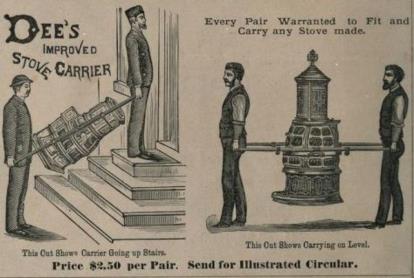

|
|
|
|
TIPS, TRICKS AND FASCINATING FACTS  Image with thanks to voiceofthemonkey.com  LIGHTING THE FIRE - is an art more than a science. With practice you'll have a roaring fire in an instant, but no-one, just no one, gets it right every time, so don't be ashamed if, occasionally, you just have to start again from scratch. The very best method is to clear the firebed of ash in the centre - it doesn't matter if ash is left around the edges, in fact, with wood this is highly beneficial. Check that the ashpan isn't so full that it might obstruct free entry of air, and empty it if need be. Place one or two firelighters (or a couple of balls of very dry, very tightly screwed-up paper) together in the centre and small dry sticks of kindling wood over the top of them. Light the firelighters, wait half-a-minute or so for them to become well alight, and gently tip plenty of dry, dust-free, medium-sized fuel over them and the sticks, so as to completely cover the whole firebed. Set all the air controls to 'full'. Close the door (if there is one) and you should have even the hardest fuel blazing away in minutes. The trick is to create a single concentrated heat source in the middle and make sure that all the air has to go through that. Putting lots of fuel on will ignite quicker as the initial flames are slowed-down by the fuel above them. It is important to try and cover the whole firebed as, otherwise, air might just be sucked through gaps rather than go through the burning material. If all else fails, there are such things as electric firelighters.  The CHIMNEY POT APPRECIATION SOCIETY is on Facebook. THE FIREWOOD POEM This charming, but not very accurate, poem about the supposed burning characteristics of different woods occurs in several versions. Softwoods and hardwood are different, but, beyond that, it is how wood is grown and seasoned which makes the big difference. We've never been able to to trace the origin of the poem, though we suspect it is pretty modern. Beechwood fires are bright and clear If the logs are kept a year. Chestnut's only good, they say, If for years 'tis laid away. Hawthorn bakes the sweetest bread. So in Ireland it is said But Ashwood new or Ashwood old Is fit for a queen with crown of gold. Birch and fir logs burn too fast Blaze up bright and do not last. Elm wood burns like churchyard mould, E ' en the very flames are cold. Poplar gives a bitter smoke, Fills your eyes and makes you choke. But Ashwood green or Ashwood brown Is fit for a queen with golden crown. Apple wood will scent your room Pearwood smells like flowers in bloom, Oaken logs, if dry and old, Keep away the winter's cold Flames from larch will shoot up high, And dangerously the sparks will fly... But Ashwood wet or Ashwood dry, A King can warm his slippers by. THE STOVE GOD  The Stove God, Zao Jun, is the traditional Chinese protector of the hearth and home, and annually reports each family's deeds to the Jade Emperor in Heaven. Some say that the He is the shade of Emperor Yan, creator of fire, but another story is that the God was once an ordinary mortal, called Zhang Lang, married to a virtuous women who he betrayed by leaving her for a young girl. For his unfaithfulness, heaven Punished Zhang Lang by making him poor and blind. But, seeing his pitiful state, his honest wife took him in and cared for him. Overwhelmed by shame, he threw himself on the kitchen fire, and was burned away to heaven, apart from one leg. Even now, a fire poker is sometimes in China called Zhang Lang's leg. PENNIES UNDER THE HEARTH There has long been a tradition of placing a few pennies under a newly-built hearth 'for luck' - and long may it continue! HEARTH PENNIES In some parts of England, and in the Isle of Man until fairly recently, there was a customary collection of pennies from every owner of a hearth to help support the local clergy. 'FOCUS' The English word 'focus' meaning 'the centre of attention' is the Latin word for 'fireplace'. COLOURED FIRE Throw a copper coin onto the fire, and the flames around it will burn green. If they don't, then it wasn't actually copper. A sprinkling of common salt turns the flames bright yellow. LUCKY CHIMNEY SWEEPS The chimney sweep is widely considered lucky, especially when maximum luck is required, such as on a wedding day, so that many modern sweeps hire themselves out to attend weddings. In Germany the Lucky Sweep, in the uniform of black suit with bold buttons and a top hat, is a popular image on New Year's gifts, while in Croatia it is said to be good luck to rub a sweep's coat buttons if you pass one in the street. CHIMNEY BOYS In past times it was not unknown for boys as young as 6 to be sent up chimneys to clean them. The English Chimney Sweepers and Chimneys Regulation Act of 1840 was one of the world's first pieces of legislation to prohibit child labour. It is still in force, and makes it illegal for any person under 21 to go inside a chimney or flue for sweeping, cleaning or coring. PYROMANCY is the supposed mystic art of telling fortunes by watching the domestic fire, though even in the 1300's the Italian poet Dante wasn't too convinced, his Divine Comedy has; Then, as in striking upon burning logs Upward there fly innumerable sparks, Whence fools are wont to look for auguries. A fire flaring up suddenly - someone is thinking of you. An oval cinder jumping up suggests a birth. A square cinder jumping out of the fire augers a death. A bright, hot cinder jumping out of the fire tells of a visit. If the fire won’t draw properly, the Devil must be very close by. So stand the metal poker upright against the fire bars so that it forms a cross to repel the evil. THE YULE LOG There is a strong tradition across Europe of bringing a special, huge, log to the fire at 'Noel' (or 'Yule'), the heart of winter, around December 23rd. This 'Bûche de Noël' in France, 'Y Bloccyn Gwylian' in Wales, 'Weihnachtsscheit' in Germany seems to long pre-date Christianity and may be the origin of having the surplus tree-top decorated inside the house at Yuletide. FIRST-FOOTING In the tradition of Scotland, Northern England and Man, the first person to enter a house after the New Year must bring a gift of fuel, commonly a log or lump of coal. Anyone new to solid fuel heating soon discovers that PAPER, in large quantities, is extraordinarily difficult to burn. This is because the substances which hold wood, or wood-based, materials together burn quickly and easily, allowing the white powdery cellulose to fall away. Cellulose can burn if it is kept hot enough for long enough, which is why wood burns best when the 'ash' is kept close to glowing logs. But the process of manufacturing paper removes the easily-burned tars, and paper just doesn't have any big mass of stuff to keep it going. To make matters worse, glossy magazine paper is frequently coated with titanium dioxide - one of the most fire-resistant materials known. Better to send paper for recycling than try to burn it. It is said that the 19th Century Coal-Owner, LORD CRAWFORD OF BALCARRES had dinner services made from the unusually hard and clean 'cannel' coal found in his Wigan seams. He would amaze his guests by ceremonially burning their plates on an open fire after the meal. The 17th Century French philosopher RENé DESCARTES said that he got all his inspiration sitting inside a stove. This has puzzled many a modern thinker, who has assumed that he must have meant 'by a stove' or 'looking into a stove'. Not a bit of it, 'stove', strictly, means a single heated space, and in Descartes day that meant a heated room. Russian brick PETCHE stoves are famously efficient, and can store heat for days. In villages of northern Siberia many older houses still have the family bed built onto the top of the stove. American author MARK TWAIN in Europe and Elsewhere, loved the German Kachelofen stoves "To the uninstructed stranger it promises nothing; but he will soon find that it is a masterly performer... Small-sized fuel is used, and marvelously little of that. The door opens into a tiny cavern which would not hold more fuel than a baby could fetch in its arms. [Yet] all day long and until past midnight all parts of the room will be delightfully warm and comfortable." On the other hand, he wasn't too impressed by the stoves back home at that time: "The American wood stove, of whatsoever breed, it is a terror. There can be no tranquility of mind where it is. It requires more attention than a baby. It has to be fed every little while... and when your wood bill comes in you think you have been supporting a volcano." Traditionally, SOAP is made from wood ash and fat. Wood ash was soaked in water for several days and the acrid 'lye water' drained off, to be boiled down until so concentrated that an egg will float in it, then stewed with clarified animal fat. The ROYAL HORTICULTURAL SOCIETY tell us that "Ash from untreated wood has a slight liming action and can be used to raise soil pH. Where ash contains larger particles, its incorporation also helps to improve soil structure. Ash produced from young sappy prunings contains a useful proportion of potassium and traces of other nutrients while older wood tends to contain lower concentrations of nutrients. If the ash is collected fresh, it will supply these in a soluble form. The actual nutrient content of ash varies so precise application is difficult. An alternative to soil application is to apply it in thin layers to the compost heap where it blends readily with other materials. Coal ash is best avoided because it has a negligible nutrient content and its fine particle size means it is of little benefit to soil structure." |
|
MORE FROM Soliftec... Home ● Fuel Costs ● Installation ● Library ● About ● Air Supply ● Blogspot ● Building Rules ● Carbon Monoxide ● CE Marking ● Dictionary ● Efficiency ● Electricity - CHP ● Embodied Energy ● Fascinating Facts ● Fireplace Doctor ● Fuel Properties ● Heat Need ● Heroes ● Legislation ● Manufacturers ● Open Fires ● Smoke ● Solid Fuels ● Standards ● Statistics ● Stove History ● Tables, Data and Formulas ● Test Laboratories ● Thatched Roofs ● The Carbon Cycle ● The Chimney Effect ● Wood Fuel ● Email: info@soliftec.com COPYRIGHT and ALL RIGHTS RESERVED: © Soliftec Ltd, Thursday 19 December 2019 BUILT WITH WHIMBERRY matrixstats |